Comments
Where Does Roger Federer Rank In The History Of Tennis?
Hall of Fame tennis historian Steve Flink provides a detailed look into the Swiss Maestro’s career and how it compares against his two bigger rivals.
Published
2 years agoon
By
Steve Flink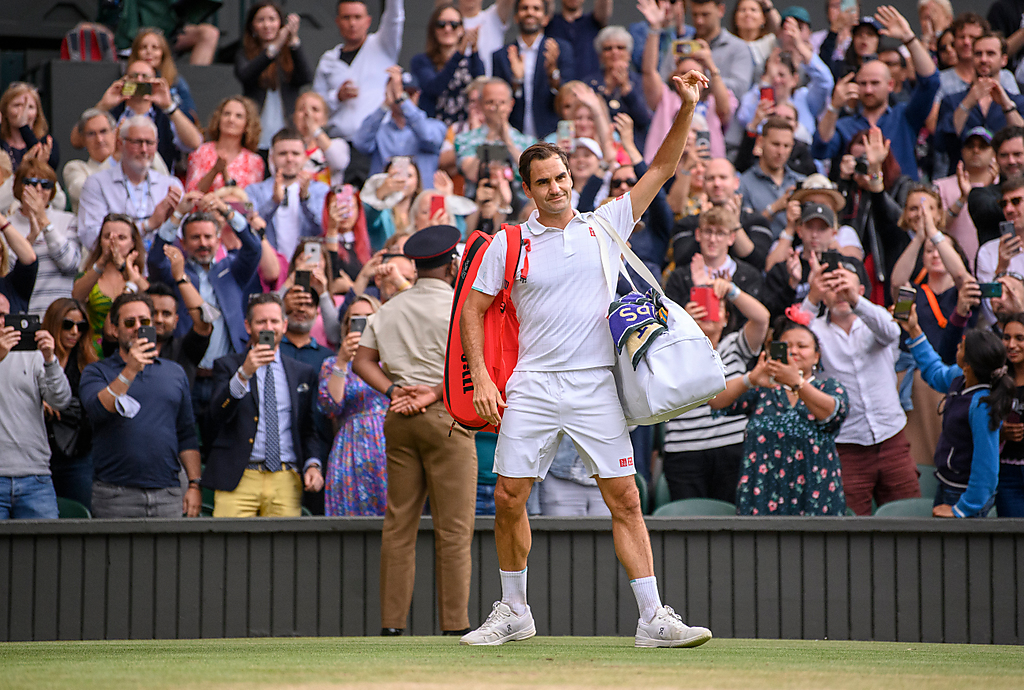
Now that several weeks have elapsed since Roger Federer bid farewell to big time tennis at the age of 41 in a losing, yet somehow triumphant, Laver Cup doubles performance alongside Rafael Nadal in London, the time has come to examine the Swiss Maestro’s lofty place in history.
He celebrated an astonishing career, scaling the heights over and over again across his prime, playing the game professionally for nearly a quarter of a century, setting the highest standards as both a shotmaker and a sportsman, and establishing himself for a multitude of reasons as the most popular player ever to pick up a racket—man or woman—in the modern history of the game.
Federer was the consummate professional, but also a tennis artist, gliding around the court effortlessly and releasing winners that seemed frequently lifted straight out of dreams. He was not simply an outstanding champion who was vastly underestimated as a competitor, but a virtuoso performer who gave galleries in every corner of the globe an immense amount of pleasure with his arresting elegance, from his signature inside-out forehand, to his sweepingly beautiful backhand, to his textbook conventional volleys along with his dazzling swing volley, to the exquisite serve that was his most reliable and important weapon.
His career was sublime. Federer captured 103 tournaments altogether in singles, taking 71 of those titles on hard courts, 19 on grass, 11 on clay, and two on indoor carpet. He finished five seasons (2004-07 and 2009) as the No. 1 ranked player in the world and spent no fewer than 310 weeks at the top, including 237 consecutive weeks of preeminence during his heyday. At 36 in 2018, he became the oldest man ever to reside at No. 1 in the world.
Moreover, he concluded 14 years in a row (2002-2015) among the top six in the world. Thereafter, he ended another four years (2017-2020) among the top five. His first year-end finish in the top ten was 2002 and his last was 2020, which was irrefutable evidence of his enduring excellence.
There is more, of course. Federer collected 20 Grand Slam tournament titles (one less than Novak Djokovic, two behind Rafael Nadal), amassing a record eight men’s singles crowns at Wimbledon, securing six Australian Open victories, winning the U.S. Open five times and ruling at Roland Garros once. In the heart of his prime, Federer pulled off a unique men’s feat by prevailing at the sport’s two most prestigious tournaments five years in a row, doing so at Wimbledon (2003-2007) and the U..S. Open (2004-2008). It was in the same span that he was unassailable at the majors. From 2004-2007 he managed to majestically collect 11 of the 16 Grand Slam titles.
That was consistency of the highest order, but the astonishing reliability he exhibited as a towering champion is amplified by the following achievements—between 2004 and 2010 he was a semifinalist or better in 23 straight major tournaments. Moreover, Federer made it (at least) to 36 consecutive quarterfinals at the four premier events in tennis from 2004 until 2013. To be sure, Federer set himself apart with his capacity to make stellar showings time and again across the years when it counted irrevocably in the places of prestige. Throw into the mix this additional proof of his stature: Federer’s astounding career match record was 1251-275.
And yet, Federer happened to belong to a splendid era in which he shared the spotlight with two other iconic figures who both made him better and yet were burdensome for the Swiss Maestro in many ways. Federer commenced his illustrious rivalry with Nadal in 2004, and they last clashed in 2019. Their crackling forty match series was highlighted by an astonishing stretch from 2006-2008 when they collided in three consecutive French Open and Wimbledon finals.
The dynamic Spaniard was victorious in all three appointments at Roland Garros on a surface where he was nearly unbeatable, while Federer—the King of the Lawns—toppled Nadal twice at the All England Club before falling gallantly against the southpaw in a five set 2008 epic contest that will live longer in our hearts and minds than any of their other memorable skirmishes.
They would also split two remarkable Australian Open five set finals in Melbourne, with Nadal coming out on top in the former (2009) and Federer prevailing in the latter (2017). That 2017 triumph was surely the most gratifying triumph of Federer’s career as he rallied from 1-3 down in the fifth set to sweep five games in a row with a shotmaking smorgasbord, most notably driving through his topspin backhand with a flair and certitude that was strikingly impressive and better than anything he had ever produced off that side to counter the Spaniard’s fabled heavy topspin forehand.
Federer found confronting Nadal to be the most daunting stylistic challenge of his career. Toward the end of 2015, Nadal held a commanding 23-10 lead in his head-to-head series with the Swiss, but Federer was the victor in six of his last seven duels with the Spaniard, and so the final tally was 24-16 in favor of Nadal. More importantly, Nadal bested Federer in six of nine final round meetings at the majors.
Enter Novak Djokovic. In the first five years of his rivalry with Federer from 2006-2010, the Serbian trailed 13-6. But Djokovic started soaring to another level in his banner year of 2011. From that point on, he had the upper hand in a riveting series with the Swiss. He took 21 of their last 31 matches to finish with a 27-23 winning record over Federer. Federer stopped Djokovic the first time they met in a major final at the 2007 U.S. Open, but thereafter Djokovic won all four title round encounters versus his revered adversary, including three Wimbledon finals (2014, 2015 and 2019) and one at the U.S. Open (2015). Not to be overlooked, Djokovic rallied from double match point down thrice against Federer, realizing that extraordinary feat in the semifinals of the U.S. Open in 2010 and 2011 as well as the riveting Wimbledon final of 2019, recording all three of those comeback victories in five sets.
And so Federer concluded his career with a losing record against his two foremost rivals. To be sure, Nadal is five years younger than Federer and Djokovic is six years younger. That must be taken into account because Federer’s zenith was across his twenties. The fact remains that Federer was struggling to solve the riddle of Nadal when the Swiss was in his twenties, but he did exceedingly well against the Spaniard during his thirties. Meanwhile, he had a much tougher time against Djokovic in the same span. It is hard to fully measure the impact of the age discrepancy between Federer and his two chief rivals.
Djokovic, for instance, has won nine of his 21 majors since turning 30, while Nadal has secured eight of his record 22 Grand Slam titles since he became 30. Federer had to settle for four more majors after he made it to age 30, capturing 16 of his 20 Grand Slam Championships over the course of his twenties.
Consequentially, Federer ended his career unfavorably against his two foremost rivals across the board and at the premier tournaments which are the authentic barometer in determining the relative greatness of iconic players. The view here is that this measuring stick must be valued very highly when examining the ultimate historical impact of a trio who defined an incomparable era with their vast array of achievements.
At one time, Federer seemed certain to surpass Djokovic and Nadal in the Grand Slam title race, but ultimately he was overtaken first by Nadal at the 2022 Australian Open and later by Djokovic at Wimbledon this past year. He has captured more total tournaments than his primary adversaries with his remarkable 103 crowns. But even that mark is in jeopardy. Nadal currently stands at 92 titles with Djokovic close behind at 90. At the very least, there won’t be much separating these three men on this statistical terrain.
Undoubtedly, Federer summoned everything he could for nearly a quarter of a century to bring out the best in himself and attain his highest goals. He kept himself in the thick of things as one of the leading players for a remarkably long time. At his best, he was the most daunting of all competitors in his time, primarily because his serve-forehand combination was so frequently unanswerable. He also was the most multi-faceted man of his generation, more natural at the net than his chief adversaries, an inventive conquerer on the tennis court with the widest arsenal and largest imagination among the “Big Three”, and a supremely cagey competitor with the widest range of options.
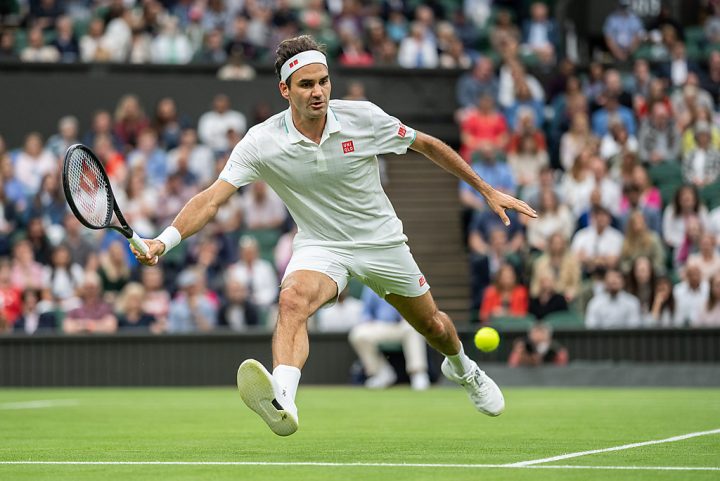
But, looking at Federer historically, he must be judged above all else on his record. It is scintillating, marked by a multitude of stupendous accomplishments, highlighted by a degree of creativity neither Nadal or Djokovic could match, showcased by the composure he exhibited just about every time he stepped on a court.
The fact remains that—at least in my view—Federer’s numbers in their entirety fall marginally short of Nadal’s and Djokovic’s. They won more majors than the Swiss, mastered Federer in most of the biggest matches they contested against him, and already they have almost matched his longevity. No one has displayed the uninterrupted consistency of Nadal in the official ATP Rankings. This 2022 season will be his 18th in a row finishing among the top ten on the planet. Only twice in that span has he not completed a year residing in the top five.
Nadal has matched Federer’s feat of ending five years at No. 1, and has an outside chance of wrapping up this year at the top, although that is unlikely. As for Djokovic, he not only has spent by far the most weeks at No.1, but he also holds the all-time men’s ATP record by establishing himself as the year-end No. 1 seven times, breaking the old mark set by Pete Sampras (1993-98). He, too, has been strikingly dependable. Djokovic is almost certain to conclude 2022 in the top ten for the 15th time in the last 16 years.
The case for Nadal as the greatest player of his era, and perhaps the finest of all time, rests on his record number of 22 majors, an astounding 14-0 record in French Open finals, the best win-loss mark in major finals of the trio at 22-8, and his staggering superiority on clay, the surface on which he has won 63 of his 92 career singles crowns.
Critics would contend that there is an imbalance in Nadal’s career credits regarding surface variety because the bulk of his success has come on clay, but the fact remains that he joins Djokovic as the only players since Rod Laver claimed a second Grand Slam in 1969 to win all four majors at least twice. Nadal, however, is the only member of the esteemed trio to secure an Olympic gold medal in singles, triumphing on the hard courts in Beijing fourteen years ago to earn that distinction. On the opposite side of the ledger, Nadal has collected only two career titles indoors and has never won the Nitto ATP Finals, perhaps the fifth most important tournament in men’s tennis. Federer flourished under a roof, winning 26 indoor championships including a record six ATP Finals victories. Djokovic has amassed 16 indoor titles, taking the ATP Finals five times.
Nadal falls well short of Federer in terms of surface flexibility, but Djokovic does not. Some longtime tennis authorities believe Federer’s clay court credentials equal or surpass those of Djokovic, but I don’t agree. Djokovic has taken the French Open title twice (2016 and 2021), while Federer ruled at Roland Garros only once (in 2009). The Swiss lost four French Open finals to Nadal while Djokovic has been beaten by the Spaniard three times in title round meetings on the Parisian clay.
But there is a wide gap in what the Serbian and the Swiss have accomplished overall on clay. Djokovic has captured 18 titles on the dirt, seven more than Federer. In addition, Djokovic has won the Italian Open—universally regarded as the second most significant clay court tournament—no less than six times, while Federer never won in Rome. Djokovic has won the highly regarded Monte Carlo Masters 1000 event twice. Federer was unable to secure that crown. Both players have been victorious at the Madrid Masters 1000 tournament on three occasions. Djokovic’s clay court record across the board is decidedly better than Federer’s.
Many experts believe Djokovic is the finest hard court player of his time, with 64 of his 90 titles taken on that surface, including a record nine Australian Opens on top of three U.S. Opens. But he also may equal or perhaps surpass Federer’s sparkling Wimbledon record; with seven titles, the Serbian is only one title shy of the Swiss at the shrine of the sport. He will surely have a few more good opportunities to prosper on the lawns of London.
While this piece has focussed solely on the “Big Three” and where they belong on the lofty ladder of history, comparing these luminaries to the game’s greatest players across all generations through a longer lens is unavoidable. We must not ignore Bill Tilden, a towering figure in the 1920’s who won ten majors and advanced the game immeasurably with his tactical wizardry. Don Budge was the first player ever to win all four majors in a single season (1938) for a Grand Slam. Jack Kramer was the best player of the 1940’s and the first half of the fifties and the author of the so-called “Big Game”.
Richard “Pancho” Gonzalez reshaped the game over the second half of the fifties and well beyond. And then, of course, the left-handed Rod Laver won two Grand Slams in the 1960’s with his golden array of shots. Put Lew Hoad into the conversation when recollecting his supreme power and grace in the late 1950’s. Others celebrate Sweden’s Bjorn Borg for his eleven major title runs in the seventies and early eighties and his undervalued three year reign as the French Open and Wimbledon champion (1978-80) when there was more of a disparity between the clay and the grass. Across the nineties and beyond, Pete Sampras stamped his authority on the sport, finishing a record six straight years (1993-98) at No. 1 in the world and capturing 14 Grand Slam tournaments. Believed by most experts to be the best server in the history of the game and an unflappable competitor, Sampras controlled the climate of the game in his era regally.
The G.O.A.T. Debate is awfully difficult and, for that matter, impossible to resolve, but this much is certain: Federer, Djokovic and Nadal are all worthy candidates. All three stood the test of time, and scaled the heights of the sport for long periods. Each of them has sweepingly changed the face of the game—Federer with his masterful craftsmanship, Djokovic with his incomparable return of serve and elastic athleticism, Nadal with his whirlwind topspin and indomitable spirit.
Federer will be regarded as the most heralded member of the trio, as a singularly elegant shotmaker and transcendent tennis champion. In fact, he is arguably the most revered sports figure of the 21st Century. People who hardly followed sports at all knew who he was and wanted to get at least a glimpse of him playing his sport as aesthetically as it could be done. He will be remembered as well for being an outstanding sportsman who conducted himself almost unfailingly with extraordinary dignity in the public arena, simultaneously competing with quiet fury.
But, in my view, Roger Federer was outdone by his two chief rivals in their absorbing three way battle for supremacy. He celebrated one of the great careers in tennis history, but in the final analysis—the way I see it—he is not the best to ever play the game, nor the standout player of his era, despite his prodigious accomplishments. And yet, in the ultimate analysis, Federer will live longer in our collective imaginations with his rare combination of style and substance, his grace under pressure and his capacity to inspire audiences completely wherever he played in the world.
You may like
-


Novak Djokovic’s Potential Second Round Clash With Rafael Nadal Headlines Olympics Draw
-


Rafael Nadal Reveals Delight At Setting Up Ajdukovic Semi-Final After Four Hour Victory
-


Rafael Nadal Boosts Olympic Preparations With Norrie Victory, Advances To Maiden 2024 Quarter-Final
-


Motivation, Pressure And Expectations – Novak Djokovic Targets History At Wimbledon
-


Carlos Alcaraz And Novak Djokovic Wouldn’t Yield To Medvedev And Musetti At Wimbledon
-


Novak Djokovic Claims 375th Major Win To Reach Wimbledon Final
Comments
Roland Garros 2024: Has Crowd Noise Reached Boiling Point Or Is It Hyperbole?
Daniil Medvedev was one of the players who commented on the debate surrounding the Roland Garros crowd.
Published
2 months agoon
30/05/2024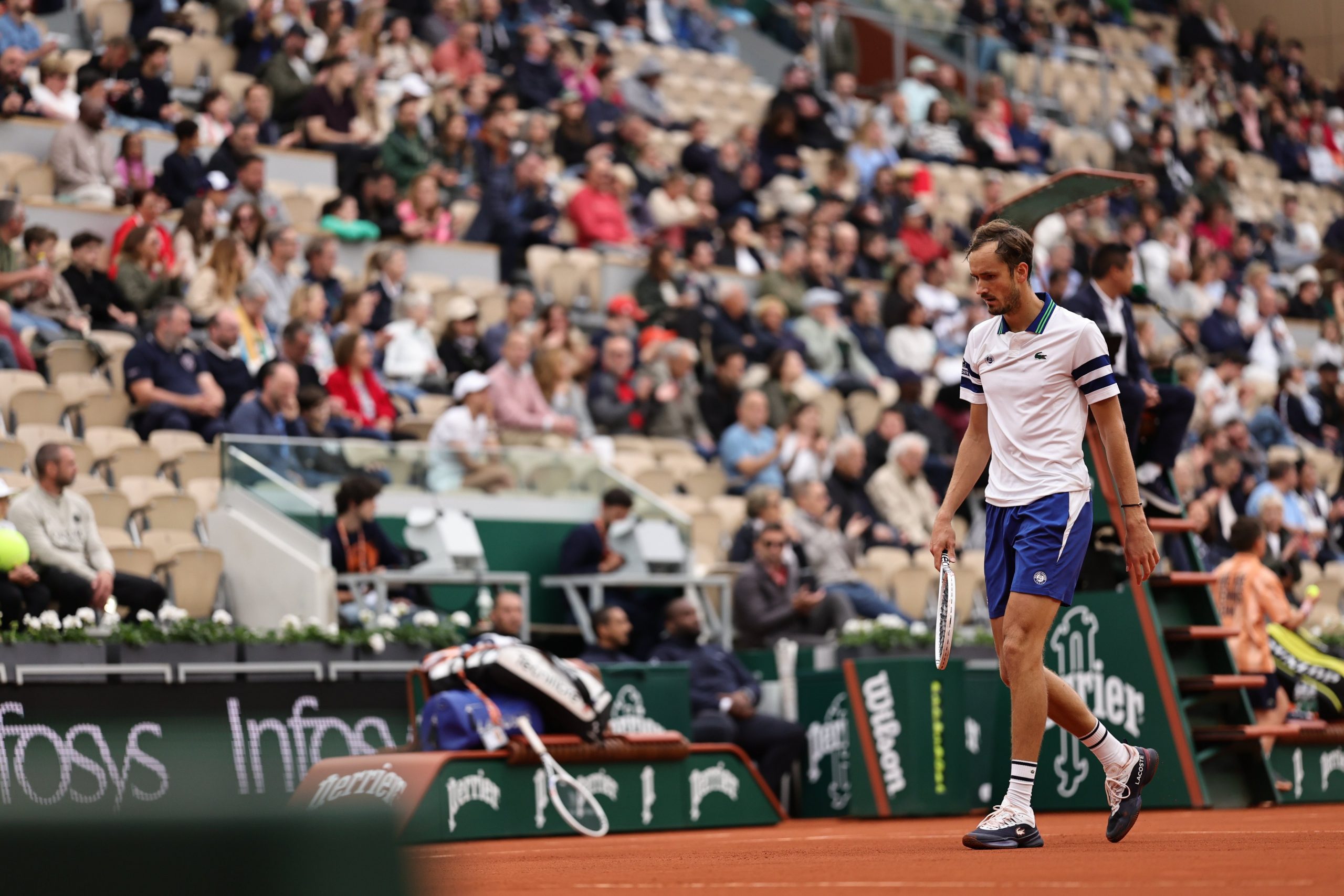
Roland Garros has often been a place with energetic crowds that have been involved in plenty of controversial moments but has it reached boiling point this year?
The Roland Garros have been involved in lots of heated moments over the years whether it’s been finals involving Novak Djokovic, whether it’s been that epic Garbine Muguruza against Kristina Mladenovic clash or any Alize Cornet or Gael Monfils match.
The French crowd isn’t afraid to show its true feelings as it’s been one of the most passionate atmosphere’s in the world.
However there has been debate in the past as to whether the crowd has been bordering on the edge of being disrespectful.
That debate has boiled over at this year’s event as it all started when David Goffin claimed the crowd on Court 14 spat gum in his direction during his five set win over Giovanni Mpetshi Perricard.
Furthermore Iga Swiatek was pleading with the crowd in her on-court interview to remain silent during the point as they were seen shouting during a volley.
This kind of behaviour from the crowd as well as the retaliation from the players has seen tournament director Amelie Mauresmo see stricter rules being enforced by security and umpires on both sides.
So has this issue reached boiling point or is this an over exaggeration? Well here is what some of the players think.
Paula Badosa
“I think she (Swiatek) cannot complain, because I played Court 8 and 9 and you can hear everything. Like, I can hear Suzanne Lenglen, Philippe Chatrier, Court 6, 7 during the points.
“I think she’s very lucky she can play all the time on Philippe Chatrier and she’s okay with that. But I don’t mind. As I said, I played in small courts these days, and I was hearing so much noise. In that moment, I’m just so focused on myself and on my match that it doesn’t really bother me.
“Honestly, I like when the fans cheer and all this. I think I get pumped. Look, we had a very tough situation years ago when we were playing without fans with the COVID situation, so now, for me, I’m so happy they’re back and I think they’re very important for our sport.”
Grigor Dimitrov
“I think us as tennis players we’re very particular with certain things, and I always say one is the background. For example, let’s say if it’s too bright or if you have, let’s say, big letters, whatever it is, it’s a bit more difficult.
“Also, with the crowd, if you see the crowd moving in the back, it’s very, very tough because we are so focused on the ball. When we see that is moving, automatically your eye is catching that. On the movement part, I’m all for being absolutely still.
“Now, with the sound, there’s not much, I guess, we can do. I think either/or I’m very neutral on that, to be honest. I could play, I don’t know, with music on and all that. Of course, I prefer when everything is, like, a little bit more tame, so to speak, but this is a little bit out of our control.”
Daniil Medvedev
“I think it’s very tough, because there are two ways. So right now, in a way, there are, like, the kind of, I would say, unofficial rule — or actually an official rule, don’t interrupt players before second serve and when they’re ready to serve and during the point. Personally, I like it. Because I think, I don’t know if there are other sports than tennis and golf that have it, but because it’s so technical and, like, I would say every millimeter of a movement you change, the ball is going to go different side.
“So, you know, if someone screams in your ear, your serve, you could double fault. That’s as easy as that. That’s not good. At the other side, if there would be no this rule and it would be allowed all the time, I think we would get used to it. Now what happens is that 95% of matches, tournaments, it’s quiet. And then when suddenly you come to Roland Garros and it’s not, it disturbs you, and it’s a Grand Slam so you get more stress and it’s not easy.
“Yeah, I think playing French in Roland Garros is not easy. That’s for sure. I think a lot of players experience it. I would say that in US Open and Wimbledon is not the same. Australia can be tough. I played Thanasi once there on the small court. It was, whew, brutal. Yeah, I think, you know, it’s a tough question. I think as I just responded, it’s good to have energy between points, but then when you’re ready to serve, it’s okay, let’s finish it and let’s play tennis. Same before first and second serve. And then when there is a changeover, when there is between points, go unleash yourself fully, it’s okay.
“But again, when you’re already bouncing the ball, you want to get ready for the serve, if it would be 10 years we would be playing loud, we would not care. But for the moment it’s not like this so when you get ready for serve, you want to toss the ball, then suddenly ten people continue screaming, the serves are not easy, so for the moment, let’s try to be quiet.”
Conclusion
In conclusion, this year’s crowd has been more volatile and aggressive then seen in previous years which is a big problem for player safety.
However on a whole the crowd is also more passionate and entertaining which makes for a quality product.
As long as the crowd can control their temperament then most of the incidents are nothing but hyperbole and something the players need to get used to in a hostile Parisian environment.
Comments
Steve Flink: The 2024 Italian Open Was Filled with Surprises
Published
2 months agoon
20/05/2024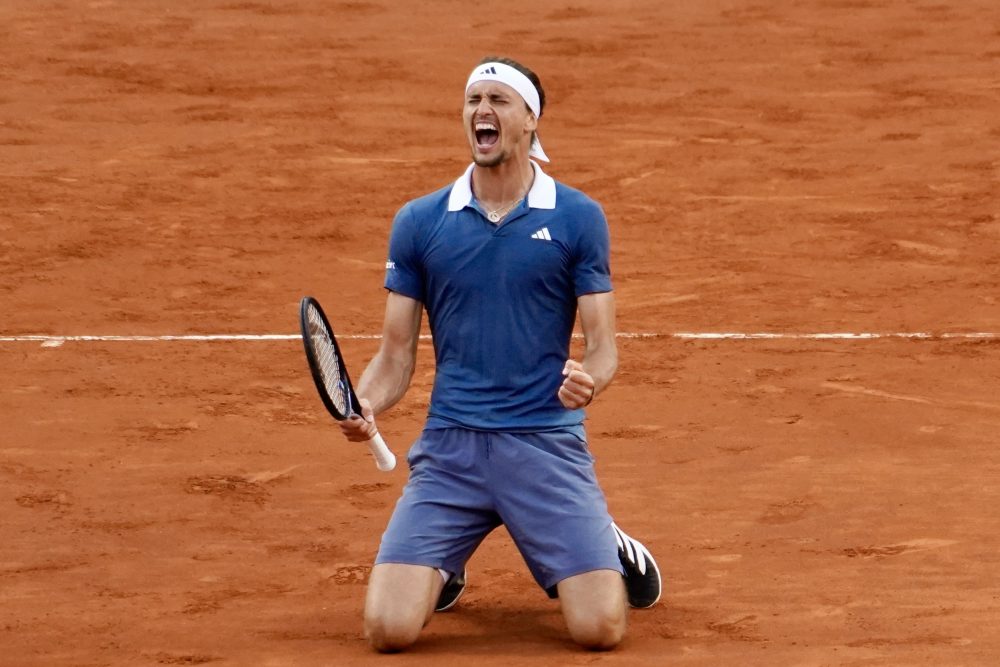
In sweeping majestically to his sixth career Masters 1000 title along with a second crown at the Italian Open in Rome, Germany’s Sascha Zverev put on one of the most self assured performances of his career to cast aside the Chilean Nicolas Jarry 6-4, 7-5 in the final. By virtue of securing his 22nd career ATP Tour title and his first of 2024, Zverev has moved from No. 5 up to No. 4 in the world. That could be crucial to his cause when he moves on to Roland Garros as the French Open favorite in the eyes of some experts.
Zverev is long overdue to win a major title for the first time in his storied career. Not only has he won those six tournaments at the elite 1000 level, but twice— in 2018 and 2021—he has triumphed at the prestigious, year end ATP Finals reserved solely for the top eight players in the world. This triumph on the red clay of Rome is a serious step forward for the 27-year-old who has demonstrably been as prodigious on clay as he is on hard courts.
Seldom if ever have I seen a more supreme display of serving in a final round skirmish on clay than what Zverev displayed against Jarry on this occasion. He never faced a break point and was not even pushed to deuce. Altogether, Zverev took 44 of his 49 service points across the two sets in his eleven service games. He won 20 of 21 points on his deadly delivery in the first set and 24 of 28 in the second. He poured in 80% of his first serves and managed half a dozen aces and countless service winners. His power, precision and directional deception was extraordinary.
Although the scoreline in this confrontation looks somewhat close, that was not the case at all. Jarry was thoroughly outplayed by Zverev from the backcourt, and despite some stellar serving of his own sporadically, he could not maintain a sufficiently high level. He did manage to win 78% of his first serve points, but Jarry was down at 35% on second serve points won. In the final analysis, this was a final round appointment that was ultimately a showcase for the greatness of Zverev more than anything else. Jarry was too often akin to a spectator at his own match as Zverev clinically took him apart.
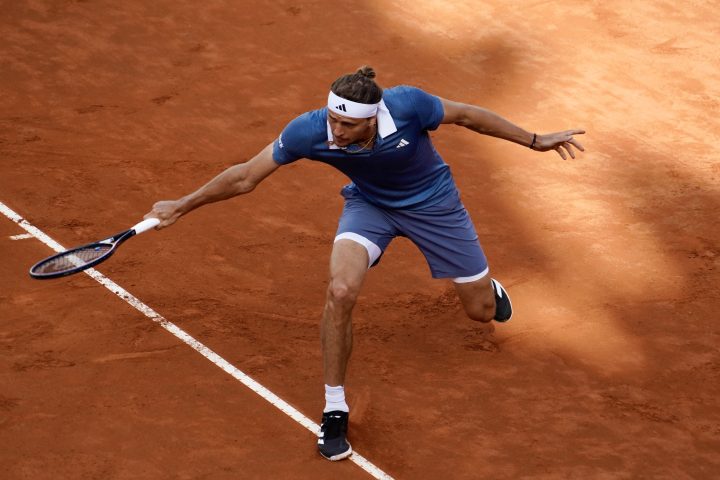
Zverev and Jarry arrived in the final contrastingly. The German’s journey to the title round was relatively straightforward. After a first round bye, he handled world No. 70 Aleksandar Vukic. Zverev dismissed the Australian 6-0, 6-4. The No. 3 seed next accounted for Italy’s Luciano Darderi 7-6 (3), 6-2. In the round of 16, Zverev comfortably disposed of Portugal’s Nuno Borges, ousting the world No. 53 by scores of 6-2, 7-5. Perhaps Zverev’s finest match prior to the final was a 6-4, 6-3 quarterfinal dissection of Taylor Fritz, a much improved player on clay this season. Zverev did not face a break point in taking apart the 26-year-old 6-4, 6-3 with almost regal authority from the backcourt.
Only in the penultimate round was Zverev stretched to his limits. Confronting the gifted Alejandro Tabilo of Chile, he was outplayed decidedly in the first set against the left-hander. The second set of their semifinal was on serve all the way, and the outcome was settled in a tie-break. With Tabilo apprehensive because he was on the verge of reaching the most important final of his career, Zverev was locked in. After commencing that sequence with a double fault, Zverev fell behind 0-2 but hardly put a foot out of line thereafter.
He did not miss a first serve after the double fault and his ground game was unerring. Zverev took that tie-break deservedly 7-4, and never looked back, winning 16 of 19 service points, breaking an imploding Tabilo twice, and coming through 1-6, 7-6 (4), 6-2. Zverev displayed considerable poise under pressure late in the second set to move past a man who had produced a startling third round upset of top seeded Novak Djokovic.
As for Jarry, the dynamic Chilean had a first round bye as well, and then advanced 6-2, 7-6 (6) over the Italian Matteo Arnaldi. Taking on another Italian in the third round, Jarry survived an arduous duel with Stefano Napolitano 6-2, 4-6, 6-4. He then cast aside the Frenchman Alexandre Muller 7-5, 6-3.
Around the corner, trouble loomed. Jarry had to fight ferociously to defeat No. 6 seed Stefanos Tsitsipas, who had by then established himself in the eyes of most astute observers as the tournament favorite. Tsitsipas has been revitalized since securing a third crown in Monte Carlo several in April. And in his round of 16 encounter, the Greek competitor had looked nothing less than stupendous in routing the Australian Alex de Minaur 6-1, 6-2.
Unsurprisingly, Tsitsipas seemed in command against Jarry in their stirring quarterfinal. He won the first set and had two big openings in the second. Jarry served at 3-3, 0-40. Tsitsipas missed a lob off the backhand by inches on the first break point before Jarry unleashed an ace followed by a service winner. The Chilean climbed out of that corner and got the hold. Then, at 5-5, Tsitsipas reached double break point at 15-40 but once more he was unable to convert. He got a bad bounce on the first break point that caused him to miss a forehand from mid-court. On the second, Jarry’s forehand down the line was simply too good.
Now serving at 5-6, Tsitsipas had not yet been broken across two sets. One more hold would have taken him into a tie-break and given him a good chance to close the account. But Tsitsipas won only one point in that twelfth game and a determined Jarry sealed the set 7-5.
Nonetheless, Tsitsipas moved out in front 2-1 in the third set, breaking serve in the third game. Jarry broke right back. Later, Tsitsipas served to stay in then match at 4-5 in that final set. He fought off three match points but a bold and unrelenting Jarry came through on the fourth to win 3-6, 7-5, 6-4. That set the stage for a semifinal between Jarry and a surging Tommy Paul, fresh from back to back upset wins over Daniil Medvedev and Hubert Hurkacz.
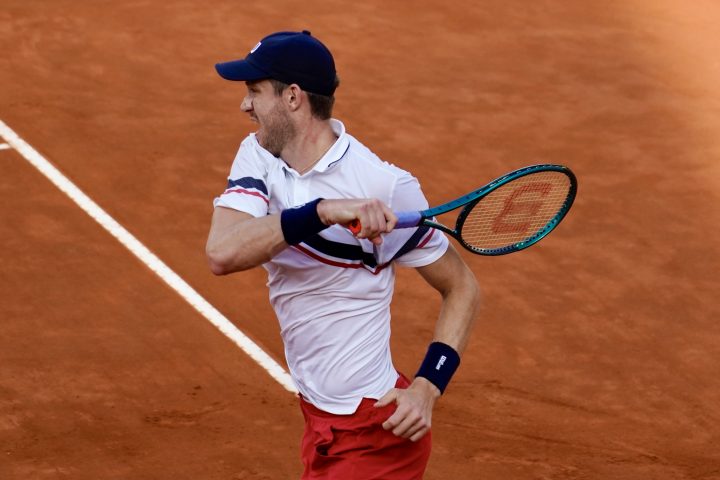
Jarry and Paul put on a sparkling show. Jarry took the opening set in 42 minutes, gaining the crucial service break for 5-3 and serving it out at 15 with an ace out wide. When Jarry built a 4-2 second set lead, he seemed well on his way to a straight sets triumph. But Paul had broken the big serving Hurkacz no fewer than seven times in the quarters. He is a first rate returner. The American broke back for 4-4 against Jarry and prevailed deservedly in a second set tie-break 7-3 after establishing a 4-0 lead.
Briefly, the momentum was with Paul. But not for long. Jarry saved a break point with an overhead winner at 2-2 in the final set, broke Paul in the next game, and swiftly moved on to 5-2. At 5-3, he served for the match and reached 40-0. But he missed a difficult forehand pass on the first match point and Paul then released a backhand down the line winner and a crosscourt backhand that clipped the baseline and provoked a mistake from Jarry.
The Chilean cracked an ace to garner a fourth match point, only to net a backhand down the line volley that he well could have made. A resolute Paul then advanced to break point but Jarry connected with a potent first serve to set up a forehand winner. The American forged a second break point opportunity but Jarry erased that one with a scorching inside in forehand that was unanswerable. Another ace brought Jarry to match point for the fifth time, and this one went his way as Paul rolled a forehand long. Jarry was victorious 6-3, 6-7 (3), 6-3.
Meanwhile, while all of the attention was ultimately focussed on the two finalists, it was on the first weekend of the tournament that the two dominant Italian Open champions of the past twenty years were both ushered out of the tournament unceremoniously. First, Rafael Nadal, the ten-time champion in Rome, was beaten 6-1, 6-3 in the third round by Hurkacz as he competed in his third clay court tournament since coming back in April at Barcelona.
He had lost his second round match in Barcelona to De Minaur. In his next outing at Madrid, Nadal avenged that loss to the Australian and managed to win three matches altogether before he was blasted off the court by the big serving and explosive groundstrokes of Jiri Lehecka. In Rome, the Spaniard won one match before his contest with Hurkacz. The first two games of that showdown lasted 27 minutes. Nadal had five break points in the opening game and Hurkacz had two in the second game. Neither man broke and so it was 1-1.
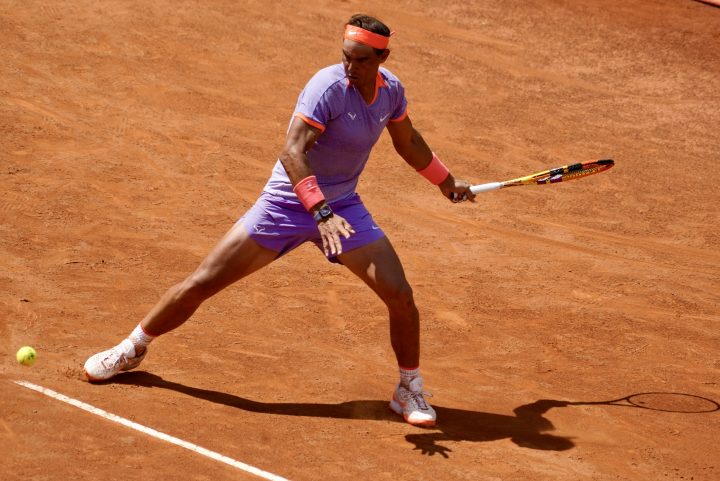
A hard fought and long encounter seemed almost inevitable, but the Polish 27-year-old swept five games in a row to take that first set, saving two more break points in the seventh game. He was mixing up his ground game beautifully, hitting high trajectory shots to keep Nadal at bay and off balance, then ripping flat shots to rush the Spaniard into errors. In the second set, Hurkacz broke early and completely outclassed Nadal. He also served him off the court, winning 16 of 17 points on his devastatingly effective delivery. With one more break at the end, Hurkacz surged to a 6-1, 6-3 triumph.
A day later, Djokovic, the six-time Italian Open victor, met Tabilo in his third round contest. Djokovic had played well in his second round meeting against the Frenchman against Corentin Moutet to win 6-3, 6-1. But afterwards, Djokovic was hit in the head by a water bottle while signing autographs. He had the next day off but when he returned to play Tabilo, the Serbian was almost unrecognizable. Beaten 6-2, 6-3, Djokovic never even reached deuce on the Chilean’s serve. On top of that, Djokovic, broken four times in the match, double faulted on break point thrice including at set point down in the first set and when he was behind match point in the second. Tabilo was terrific off the ground and on serve, but Djokovic was listless, lacking in purpose and seemingly disoriented. Some astute observers including Jim Courier thought Djokovic might have suffered a concussion from the freakish water bottle incident, but he did tests back in Serbia which indicated that was not the case.
Now Djokovic has decided to give himself a chance— if all goes according to plan— to potentially play a string of much needed matches at the ATP 250 tournament in Geneva this week. All year long, he has played only 17 matches, winning 12 of those duels. But nine of those contests were at the beginning of the season in Australia. Since then, he has played only eight matches. On the clay, he went to the semifinals in Monte Carlo where he benefitted from four matches, but he skipped Madrid and hoped to find his form again in Rome.
Realizing that losing in the third round there left him not only lacking in match play but not up to par in terms of confidence as well, Djokovic will try to make amends in Geneva. A good showing in that clay court tournament— either winning the tournament or at least making the final—would send the Serbian into Roland Garros feeling much better about his chances to win the world’s premier clay court championship for the third time in four years and the fourth time overall in his career.
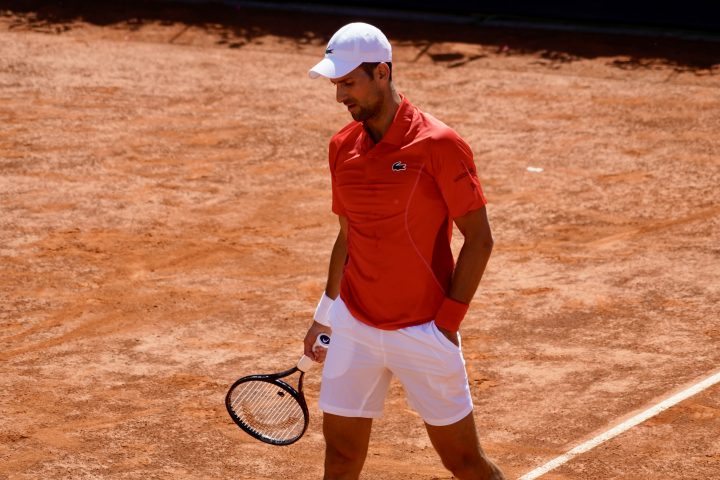
How do the other favorites stack up? It is awfully difficult to assess either Carlos Alcaraz or Jannik Sinner. Alcaraz missed Monte Carlo and Barcelona and probably rushed his return in Madrid, losing in the high altitude to Andrey Rublev in the quarterfinals. Then he was forced to miss Rome. He is clearly underprepared. As for Sinner, he played well in Monte Carlo before losing a semifinal to Tsitsipas. He advanced to the quarterfinals of Madrid but defaulted against Felix Auger-Aliassime with a hip injury.
Will Alcaraz and Sinner be back at full force in Paris? I have my doubts, but the fact remains that Sinner has been the best player in the world this year, capturing his first major in Melbourne at the Australian Open, adding titles in Rotterdam and Miami, and winning 28 of 30 matches over the course of the season. Alcaraz broke out of a long slump to defend his title at Indian Wells, but missing almost all of the clay court circuit en route to Rome has surely disrupted his rhythm.
I would make Zverev the slight favorite to win his first Grand Slam tournament at Roland Garros. If Djokovic can turn things around this week and rekindle his game, there is no reason he can’t succeed at Roland Garros again. I make him the second favorite. Out of respect for Alcaraz’s innate talent and unmistakable clay court comfort, I see him as the third most likely to succeed with Sinner close behind him. But that is assuming they are fit to play and fully ready to go.
Tsitsipas and Casper Ruud must be taken seriously as candidates for the title in Paris. Tsitsipas upended Medvedev and Zverev in 2021 to reach the Roland Garros final, and then found himself up two sets to love up against Djokovic before losing that hard fought battle in five sets. Ruud has been to the last two French Open finals, bowing against Nadal in 2022 and Djokovic a year ago. They started this clay court season magnificently, with Tsitsipas defeating Ruud in the Monte Carlo final and Ruud reversing that result in the final of Barcelona. Both men figure to be in the thick of things this time around at Roland Garros.
Where does Nadal fit into this picture? He will surely be more inspired at his home away from home than he was in his three other clay court tournaments leading up to Roland Garros, but it will take a monumental effort for the 14-time French Open victor to rule again this time around. With a decent draw, he could get to the round of 16 or perhaps the quarterfinals, but even that will be a hard task for him after all he has endured physically the last couple of years. Nadal turns 38 on June 3. If he somehow prevails once more in Paris, it would be the single most astonishing achievement of his sterling career.
The battle for clay court supremacy at Roland Garros will be fierce. The leading contenders will be highly motivated to find success. The defending champion will be in full pursuit of a 25th Grand Slam title. Inevitably, some gifted players will be ready to emerge, and others will be determined to reemerge. I am very much looking forward to watching it all unfold and discovering who will be the last man standing at the clay court capital of the world.
NOTE: All photos via Francesca Micheli/Ubitennis
Comments
Can Defensive Tennis Still Be A Success Story In Women’s Tennis?
Slam triumphs, top rankings: in just a few years we have witnessed the rise and fall of a certain way of playing tennis. So what’s really been happening? Kerber, Halep, and Wozniacki have been the latest successful performers of defensive gameplay.
Published
2 months agoon
13/05/2024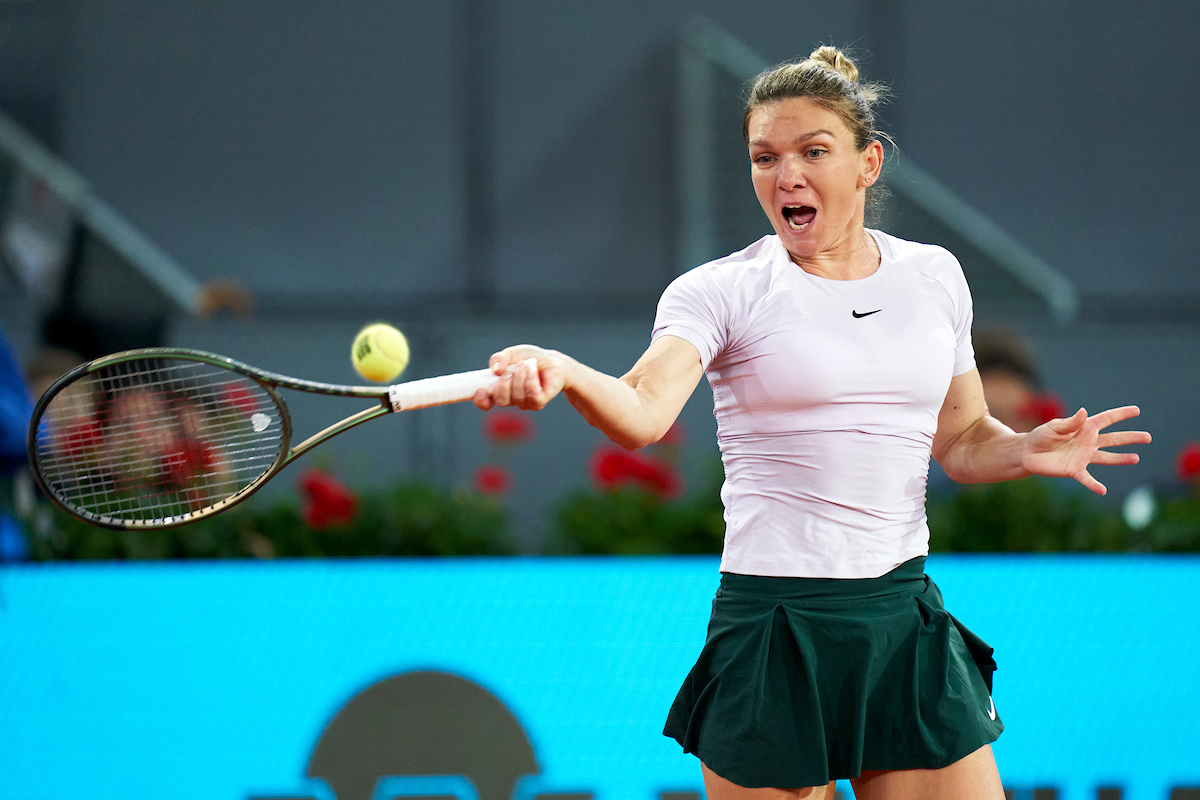
The last two WTA 1000 events, Miami and Madrid, whose final featured Danielle Collins vs. Elena Rybakina and Iga Swiatek vs. Aryna Sabalenka respectively, have confirmed a trend that in recent seasons seems more and more entrenched in the women’s tour: the prevalence of offensive tennis over defensive tennis.
Compared to a few years ago, things seem to have profoundly changed, to the point of almost being reversed. This does not mean that a certain type of “reactive” game has disappeared, nor that tennis based on the effectiveness of the defensive component has been scrapped. Yet, it is a matter of fact that players who rely predominantly on this approach struggle to break through and reach the top positions, unlike just a few years ago.
Before trying to identify the reasons for this phenomenon, it is necessary to verify whether the thesis is true. Here are some data. Below are the WTA rankings of the past years starting from 2015. I have highlighted in yellow the players who, in my opinion, can be associated with a defensive type of tennis.
A first comment on the 2015-17 period and the players I highlighted. Few doubts about Wozniacki, Kerber, Svitolina, and Errani. These are athletes who were never afraid of engaging in long rallies, and who often strove to turn the match into an endurance challenge, an arm wrestle over durability. It was not logical for them to seek quick and rushed points.
Including Simona Halep may seem less obvious. However, in my view, in her approach there prevails a tendency to rely on a “reaction” strategy, hitting back at her opponent’s choices; a counter-attack game, specular to an idea of pure aggressive tennis based on systematically and immediately getting the upper hand in rallies.
That is why I also highlighted Radwanska and Sevastova. In their case, it was mainly their lack of power that forced them to leverage their opponent’s power. As a result, hitting a winner could not be their first option. Winning points by eliciting errors from their opponent was far easier, simply by lengthening the rallies.
I was tempted to include Stephens and Kuznetsova as well, but in their case the matter is particularly complex because they are such eclectic players that they are difficult to confine to just one category. In fact, on the occasion of Sloane Stephens’ victory in the 2017 US Open, I decided to describe Stephens as “indefinable.”
Now let’s move on to the next three years, 2018 to 2020.
2018 represents the pinnacle of defensive tennis, with four of its icons at the top of the rankings and three more in the top 15. After all, 2018 is the year that sees Wozniacki win in Australia (defeating Halep in the final), Halep in Paris, and Kerber at Wimbledon. At the WTA Finals in Singapore, Elina Svitolina reaps the most prestigious title of her career.
If 2018 is to be considered the zenith of defensive tennis, since 2019 there has been quite a crushing decline, confirmed by the rankings of the last three years, 2021 to 2023.
Here follows a chart of the results in the Slams and WTA Finals from 2015 to 2024.
The final Top 10 ranking 2023 featured no player with a markedly defensive imprint. Daria Kasatkina was the only flagbearer holding on in the top 20. Players deploying aggressive tennis now seem to have taken the lead in operations.
Which are the causes that have led to the current scenario? I have identified three, which may also have been acting jointly.
1) Lack of generational turnover
One possible thesis is that the structural conditions of the women’s tour haven’t changed significantly, but that we are simply going through an episodic lack of generational turnover in defensive tennis. A temporary blackout which is bound to be overcome over time.
Wozniacki (born 1990) and Kerber (born 1988) were halted first by physical issues and then by maternity leave. Maternity also for Svitolina (born 1994), while Halep (born 1991) has been sidelined for almost two years by her doping case. In essence, all of the strongest defensive tennis players have disappeared from the top ranks due to factors unrelated to the court; somewhat prematurely, and that is also why there has not been time to find successors.
On the other hand, as of today, there are not many players aged under 30 on the horizon. I would mention Mertens (born 1995) and Kasatkina (born 1997). If we take into account that a possible alternative like Sorribes Tormo (best ranking 28) is 27, it’s quite hard to identify who can perpetuate defensive tennis.
2) Changed game conditions
For this second hypothesis, we are venturing along a complex and uneven path, which would require much more space for being addressed as it deserves. In short, the proposition holds that “slow” playing conditions favour defensive tennis, whereas “fast” playing conditions snugly fit with aggressive tennis. Should this hypothesis turn out to be grounded, organizers would simply have to decide to speed up or slow down the playing conditions and tables would be turned.
I recall the “very slow” 2018 WTA Finals in Singapore, won by Svitolina over Stephens. As far as I am concerned, I do not have such data to suggest that in recent years the playing conditions have been sped up, thus penalizing defensive players. Almost certainly the last Finals (Guadalajara, Forth Worth, and Cancun) were played in faster conditions than the previous editions held in Asia, but it is far more complicated to prove this for the Slams and other major tournaments.
I remember that when talking about playing conditions, not only the surface of the courts should be taken into account, but also the balls used (as well as humidity, altitude, etc). And for some essential data there no certainties, which means that the thesis is possible, but not provable.
3) Further growth of offensive players
Third hypothesis: in recent seasons new aggressive players who have risen to the very top have also enhanced the quality of their tennis, raising the bar to such heights which appear to be out of the reach of defensive players. Ultimately, offensive players have been making greater strides than defensive players.
I would say that such growth has manifested itself in two different directions. On the one hand, some players have further strengthened the offensive component, starting with the quality of their serve or and groundstrokes (as in the case of Rybakina and Sabalenka).
On the other, fewer “one-dimensional” tennis players have emerged. Currently we are seeing athletes who are comfortable not only when commanding the rally, but also when compelled to defend themselves. Let’s consider the latest year-end No. 1s: we went from Kerber/Halep (2016-18) to Barty/Swiatek (2019-2023). Well, both Barty and Swiatek were and are players capable of producing more wins than Angelique and Simona, but without going down when under pressure or scurrying and scrambling.
Wozniacki, Kerber, and Halep have relied on their great mobility and superior court coverage skills to reach the top. However, today No. 1 spot is held by a tennis player like Swiatek who, besides being a remarkable ball-striker, in terms of mobility is not at all inferior to Wozniacki & Co.
Indeed, my personal belief is that Iga is probably the best-moving tennis player since Steffi Graf. Maybe not yet when moving forward, but at least horizontally, off her right and left wing. In fact, as well as being endowed with a superlative rapidity and responsiveness, Swiatek possesses phenomenal coordination skills. A gift that enables her to organize her swing in very few moments, even if she is called upon to execute it at the end of a sprint or lunge, perhaps sliding. This means that those players who rely mainly on defensive skills are likely to find themselves lacking sufficient weapons to face an opponent with such qualities.
Conclusions
This is the current situation. What about the future? Since I do not possess a magic crystal ball, I do not feel like reciting a “de profundis” for defensive tennis. Things could change, especially in the long term.
In the short term, there is still the possibility that the “senior” players will be able to retrieve their best levels. After all, already last year at Wimbledon Svitolina was able to reach the semifinals after ousting Swiatek in the quarters. And probably if she had managed to defeat Vondrousova in the semifinals, in my opinion, she would have had very good chances against Jabeur, considering their records in finals (Ons 5 won and 8 lost, Elina 17 won and 5 lost).
Before being halted by Vondrousova, Svitolina had appeared as full of conviction, recharged by her maternity break. Which brings us back to the mental component, which can sometimes prove to be the extra weapon, capable of overshadowing physical-technical aspects. If a defensive player endowed with an exceptional killer instinct were to burst into the WTA tour, quite different scenarios might open up.
Translated by Carla Montaruli

Paris Olympics Daily Preview: Osaka Plays Kerber, Nadal Teams with Alcaraz

Tennis At The 2024 Paris Olympics: Five Things You Need To Know

Rafael Nadal’s Double Olympic Bid In Doubt, Confirms Coach Moya

Matteo Berrettini extends his winning streak to eight consecutive matches to reach the semifinal in Kitzbuehl

Novak Djokovic’s Potential Second Round Clash With Rafael Nadal Headlines Olympics Draw

Wimbledon Says No To Euros, No To Sunday Starts But Yes To An Andy Murray Statue

Wimbledon: Frances Tiafoe – ‘I Was Losing To Clowns And Took The Game For Granted’

Andrey Rublev Explains On-Court Outburst Following Wimbledon Exit

EXCLUSIVE: Sumit Nagal Brings Indian Tennis To The Main Stage But He Has Concerns About The Future

(VIDEO) Jannik Sinner Set To Renew Rivalry With Defending Champion Alcaraz, Djokovic Ready To Play

(VIDEO) What Is Wrong With Jannik Sinner?

(VIDEO) Ubaldo And Steve Flink – “Djokovic Was Too Flat, Alcaraz Triumphs Yet Again At Wimbledon”

(VIDEO) Steve Flink, Ubaldo On The Wimbledon Women’s Final: ‘The Better Player Won But Did Inexperience Play A Part?’

(VIDEO) Ubaldo And Steve: “Paolini’s Resilience Earns Her Another Stunning Grand Slam Final”

(VIDEO) Amazing Lorenzo Musetti Sets Up Djokovic Showdown At Wimbledon
Trending
-

 Hot Topics3 days ago
Hot Topics3 days agoNo Olympic Village Stay For Novak Djokovic In Paris, Says Delegation
-

 Latest news3 days ago
Latest news3 days agoWorld No.634 Laura Samson Reaches First WTA Quarter-Final At 16
-

 Hot Topics2 days ago
Hot Topics2 days ago(VIDEO) What Is Wrong With Jannik Sinner?
-

 Hot Topics3 days ago
Hot Topics3 days agoFive Talking Points Ahead Of The 2024 Olympic Men’s Tennis Tournament
-

 Focus2 days ago
Focus2 days agoJannik Sinner Withdraws From Olympics Due To Tonsillitis
-

 Focus2 days ago
Focus2 days agoMatteo Berrettini battles past Alejandro Tabilo to reach the quarter final in Kitzbuehl
-

 Focus2 days ago
Focus2 days agoCoco Gauff ‘Proud’ Of Being Named Olympic Flagbearer alongside Lebron James
-

 Hot Topics2 days ago
Hot Topics2 days agoAndy Murray At Peace With Retirement Decision Ahead Of Olympic Farewell

